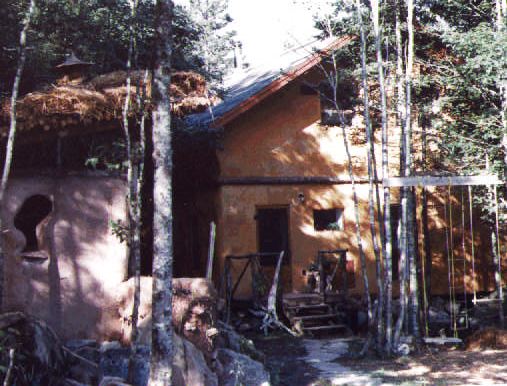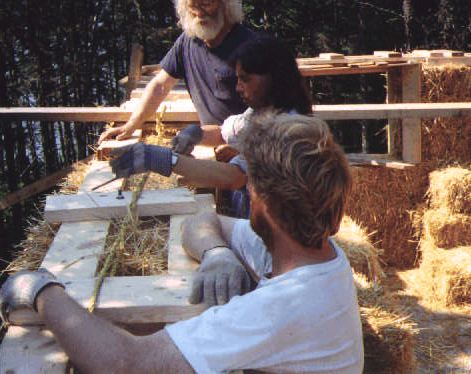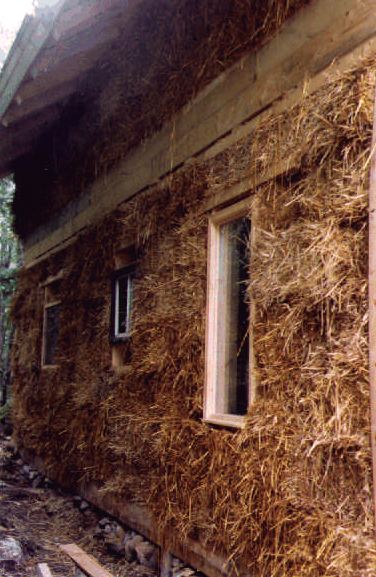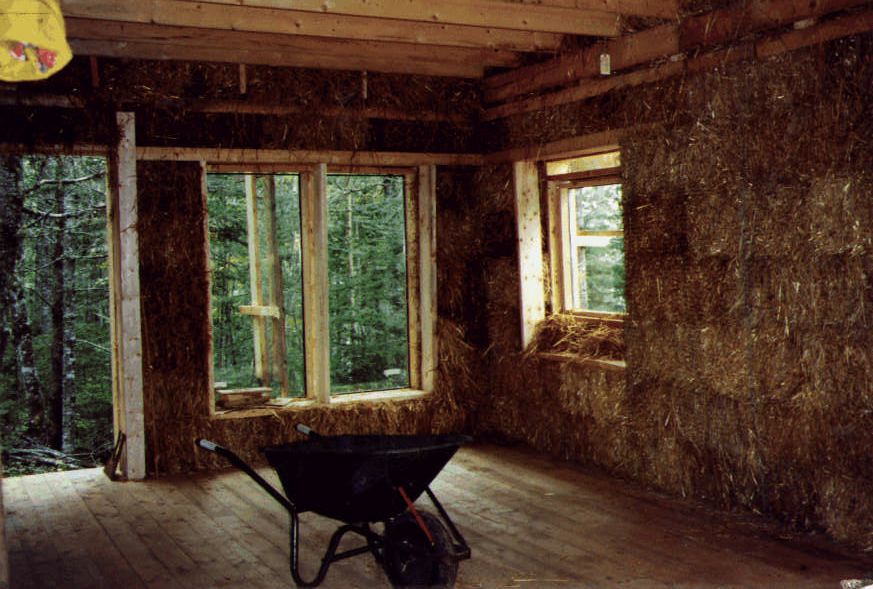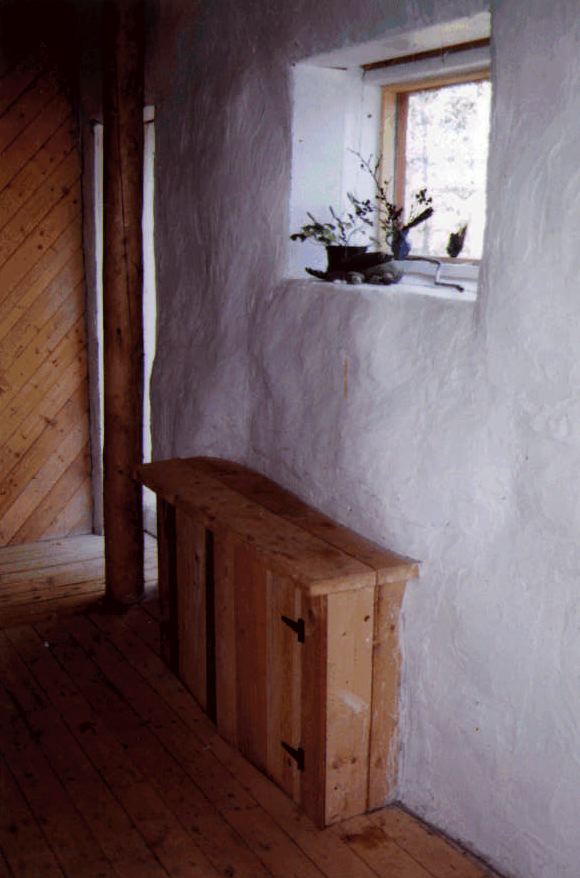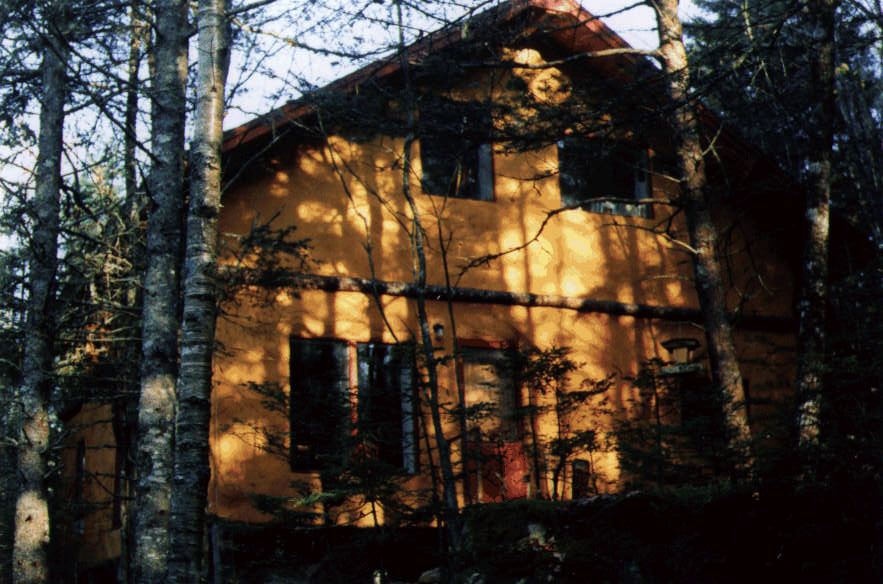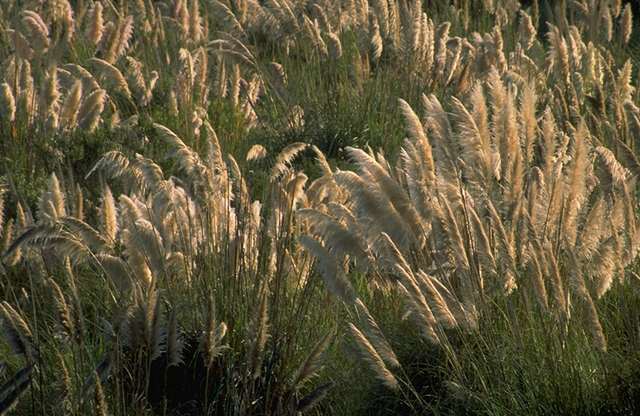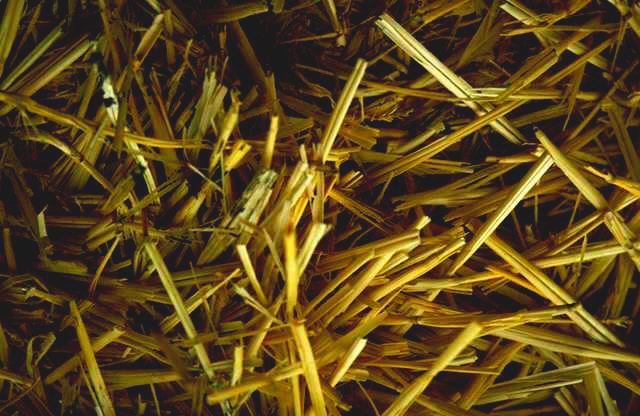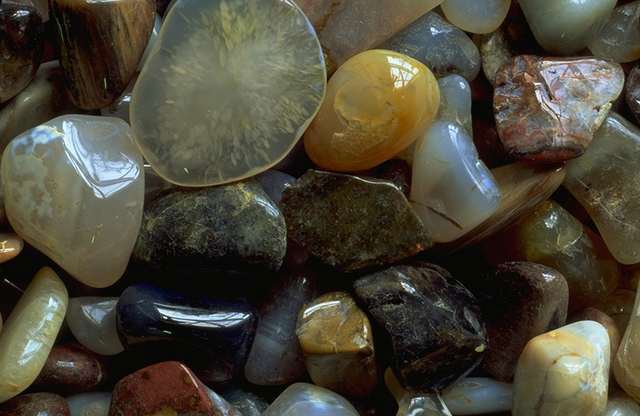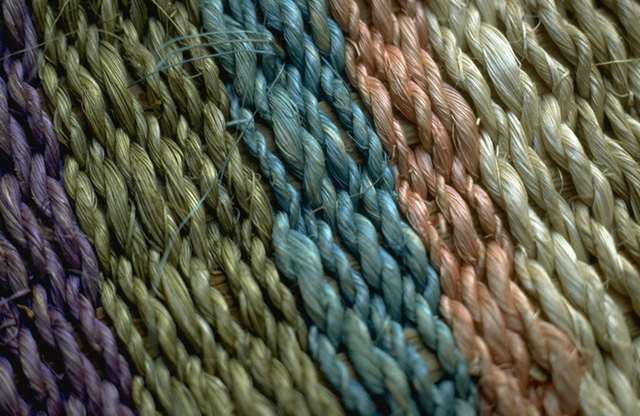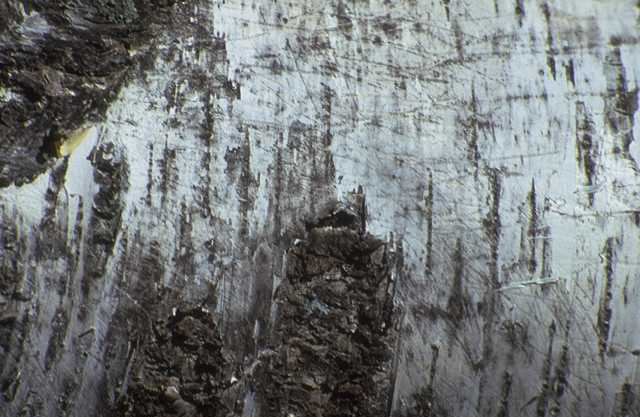in Ship Harbour
The Straw House was built in 1993. It is a work-in-progress. There are many details as yet, incomplete. It grows with us, and as does, we are able to incorporate new knowledge, and address new needs.
The Ship Harbour Project grew out of the need to construct a workshop for a home based herbal business. It was important to me, that the building impact as little as possible the immediate ecosystem around the site, that environmentally responsible building materials be used and that the structure be beautiful and economical.
A few photos of straw bale buildings sparked a journey for me which unearthed a straw-bale revival begun in the mid eighties in the southern states. This building renaissance is receiving considerable attention from people looking for proven alternatives to current building practices.
The Ship Harbour Project is a two-storey building erected on recycled telephone posts. The outside dimensions are 28x33 feet and the inside 25x30 feet, with a living area of 1500 square feet. The walls are 7 bales high on the main floor and 3 bales high on the second. Half bales of straw were used as floor insulation between the floor joists and the cathedral roof has R20 rigid insulation. Two string bales give an R- value of about 40, or twice that of standard stud frame construction.
In Nebraska style construction straw bales are treated like large bricks and laid in courses around the perimeter of the floor. Doors and windows essentially float in the walls, a top plate on which rests the second floor and a second plate on which sits the roof, tie the walls together. Three foot lengths of iron threaded rod are coupled together tying in from under the main floor and running continuously to the second top plate. These rods are placed approximately every three feet and provide some lateral support for the walls. Four-foot lengths of bamboo were also used to pin the bales together every 3 feet.
We allowed the building to settle for 5 weeks before we began to mortar (or parge) the walls. (Note: the walls compacted an inch and a half in the first week and insignificantly after that. I.e. depending upon the quality of the bales, 5-6 weeks may not be necessary) While we waited for the settling we covered the walls both inside and out with chicken wire, this we stapled to any bits of exposed wood such as the plates and lintels. We then stitched the chicken wire to the walls with large homemade metal needles and hemp, this helped the mortar to adhere to the walls. Two coats of parging were troweled on to the entire building inside and out. Then the interior was whitewashed and the outside was painted with ferrous sulphate, a mineral supplement for animals, to get a warm yellow ochre colour.
The project took about four months to complete. The building felt immediately part of the natural landscape, the walls are deep, quiet and substantial, the rounds, lumps and bumps speak of their organic origin, there is absolutely nothing flimsy or weak about them. The building has weathered incredible winds and storms of all kinds and while they rage one is hardly aware of the weather outside.
About half of the labour on the project was volunteer. The method lends itself to the "barn raising" spirit with all the good will and tremendous energy that brings. Countless hours were spent working out strategies and details with common sense, creativity and humor, our only guide was Steve and Orion McDonald's Straw Bale Primer (10 photocopied pages of information). Today, there a several excellent publications on the subject, some of these are available through the Ship Harbour Project.
Code In order to obtain a building permit for the project, we needed to have the endorsement of a structural engineer to vouch for the soundness of the construction. This was the first code approved load bearing straw bale building in Canada
Community feelings We estimate that close to 900 people have visited the Straw House. Many of these are neigbours or from the immediate community, others from elsewhere in Canada, the States, Europe and beyond. Many were skeptical when they arrived but few, we like to believe, left unimpressed by they saw, and some are living in their own straw bale homes today. There are now twelve code approved straw bale projects in Nova Scotia and New Brunswick, as well as many smaller out buildings.
Straw Bale Projects is already involved in the design and construction of several more for 1999. Some of this have a workshop component to them for people interested in learning hands on about straw bale construction.
